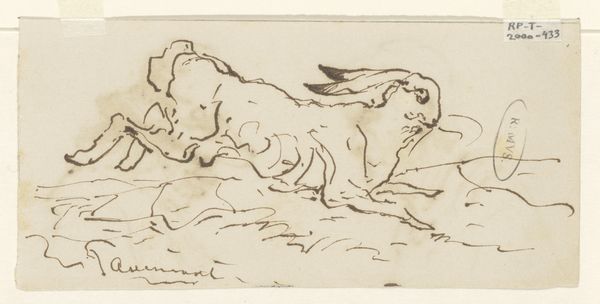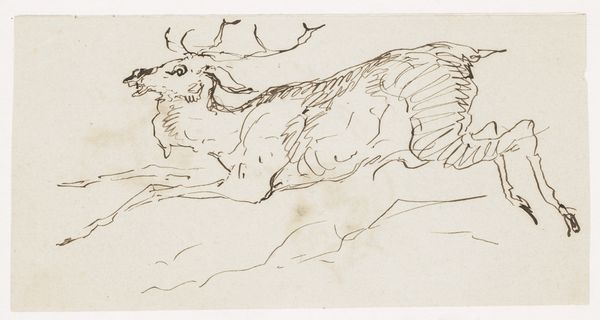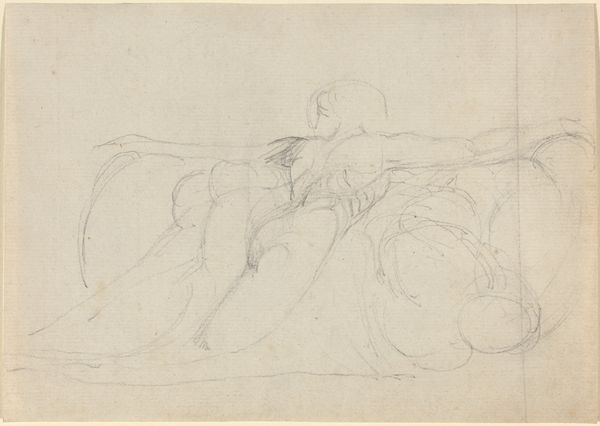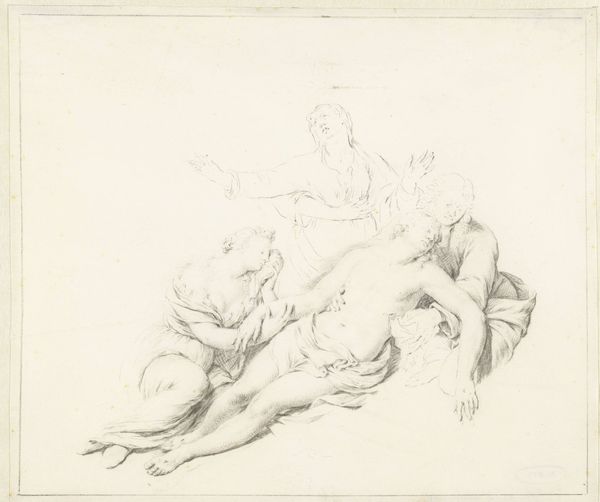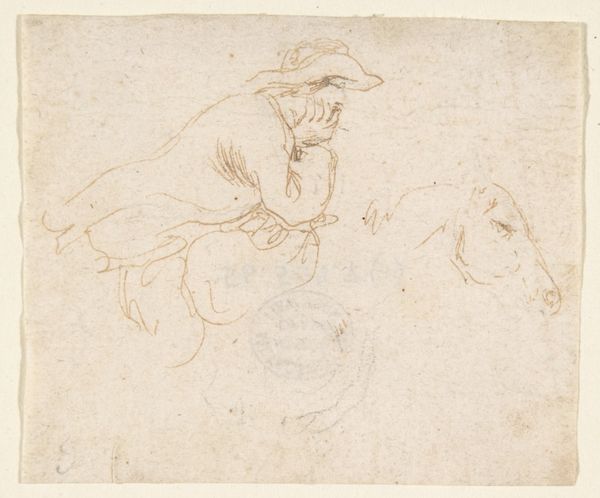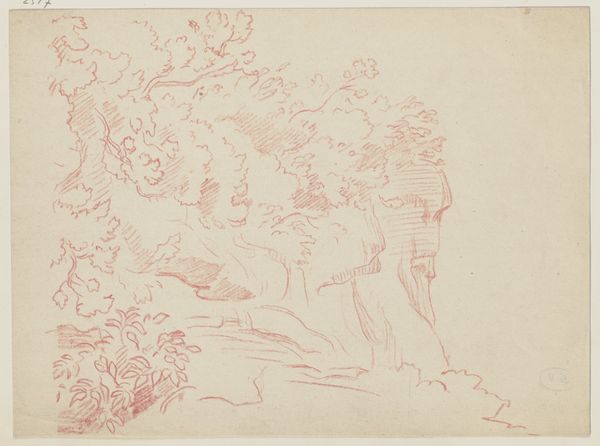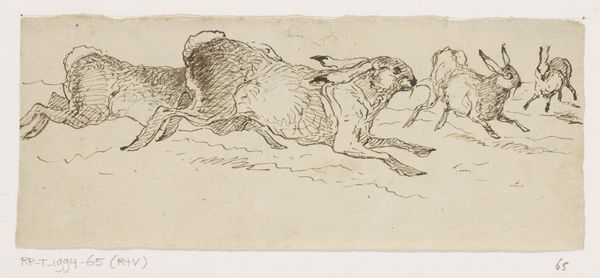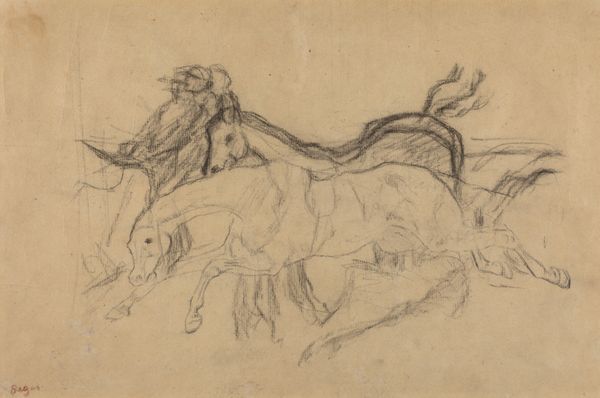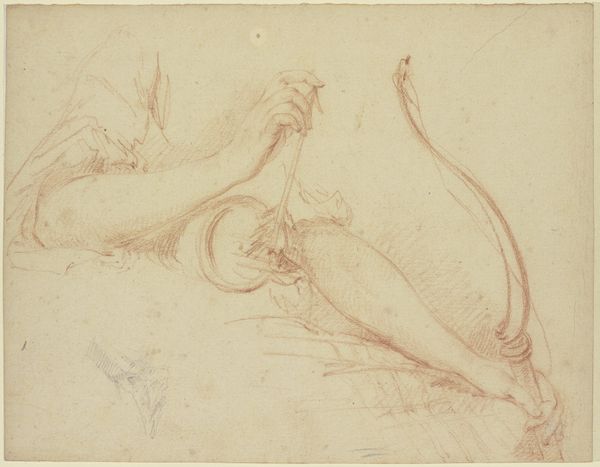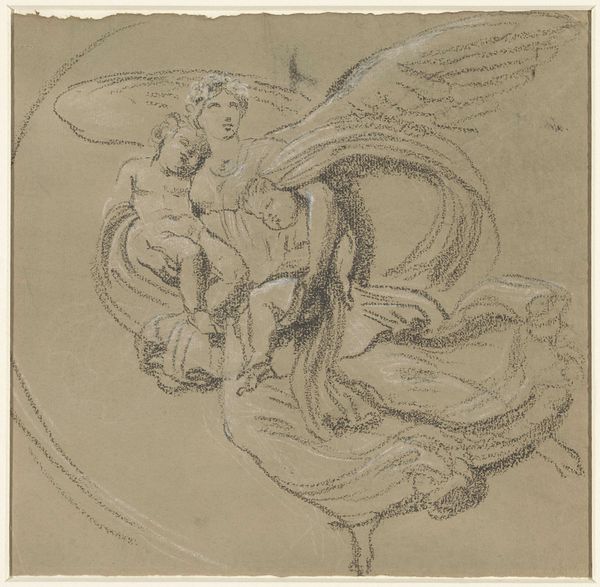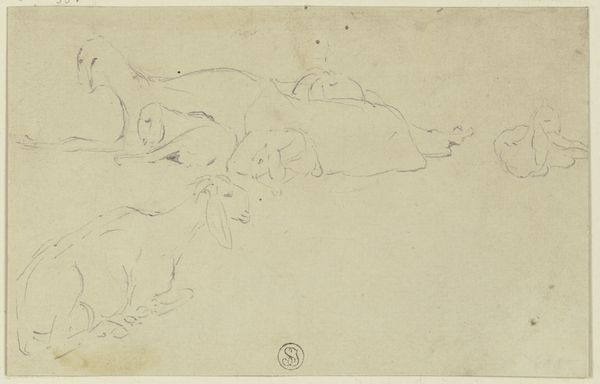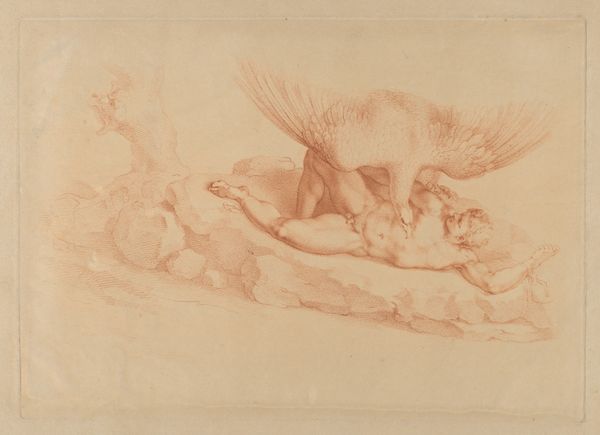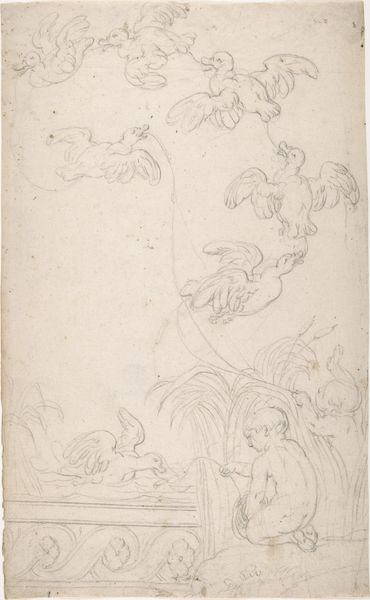
Copyright: Public Domain
Editor: Here we have "Hermia und Helena als junge Mädchen," or "Hermia and Helena as young girls," a pencil drawing by Paul Konewka from around 1867 to 1868. It's so delicate and ethereal, almost like a memory. What aspects of this drawing strike you the most? Curator: What immediately comes to mind is how this piece engages with the tradition of representing female friendships within the visual arts during the 19th century. This was a time when societal roles for women were very constrained, and the expression of intimate, supportive relationships amongst women became, in some ways, a subversive act. What do you notice about their positioning, their relationship to each other, and to the surrounding landscape? Editor: They're positioned closely, almost sharing a space, yet looking in different directions. It feels like they’re connected but also very much individuals. Curator: Precisely. That tension is significant. The landscape isn't just a backdrop; it’s integral. Think about how Romanticism, the style associated with this drawing, valued nature as a space for emotional expression and freedom, but was that freedom accessible for everyone, especially women? How do you read that in the context of their attire, poses and relationship in the landscape? Editor: I guess it presents an idealized vision. Their placement seems deliberate, almost staged. They appear harmonious with nature but separated from it. Maybe they represent a commentary on the limitations women faced. Curator: Exactly! Konewka highlights these women's interiority through his technique and the broader cultural and historical narrative. It is displayed at the Städel Museum; museums themselves have played a crucial role in shaping the way we interpret history. Does knowing this affect how you see the work? Editor: Definitely. It makes me think about how these images are collected and displayed, and whose stories get told through art history. This piece, tucked away as a drawing, might speak volumes about women's roles. Curator: And how its place within a specific collection in Frankfurt might imbue the piece with layers of local historical resonance. Thinking critically about not just *what* is depicted but *where* it’s shown can really enrich our understanding. Editor: I agree. I never thought about it like that before. I'll definitely keep the social context in mind as I continue looking at art.
Comments
No comments
Be the first to comment and join the conversation on the ultimate creative platform.
